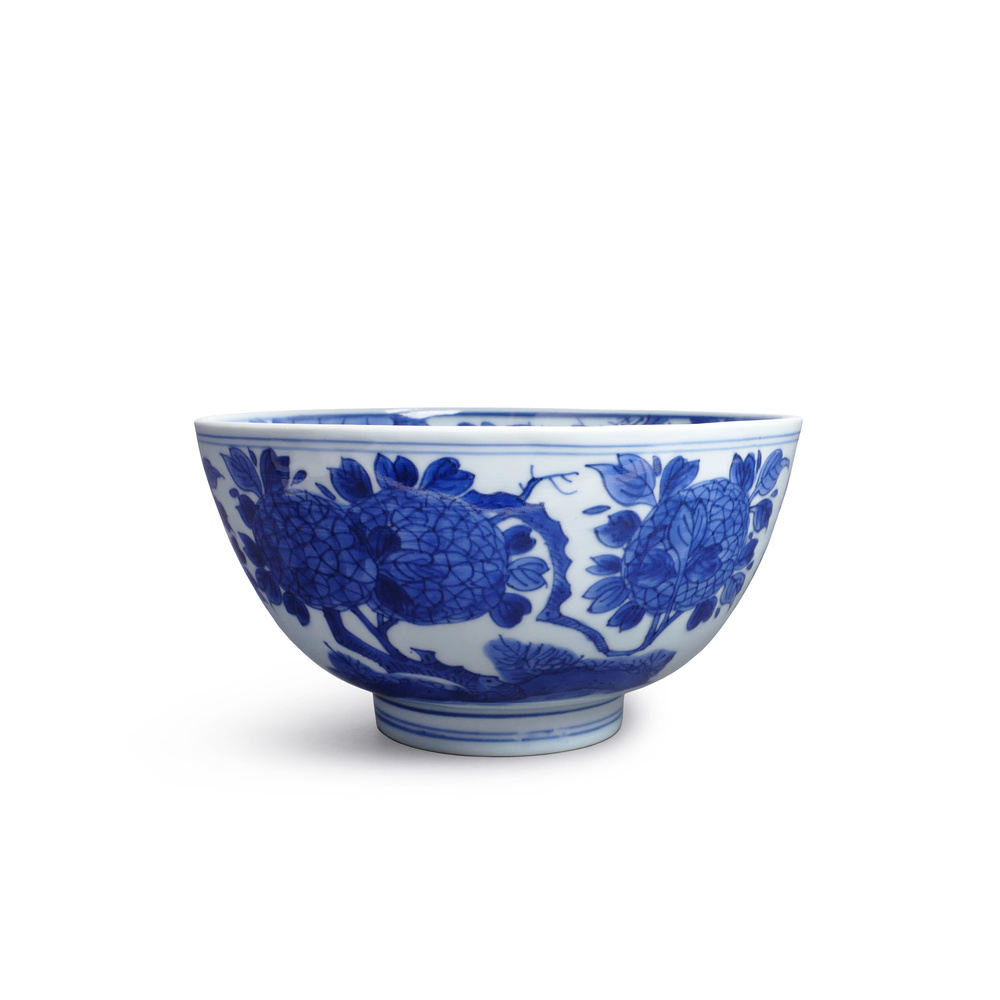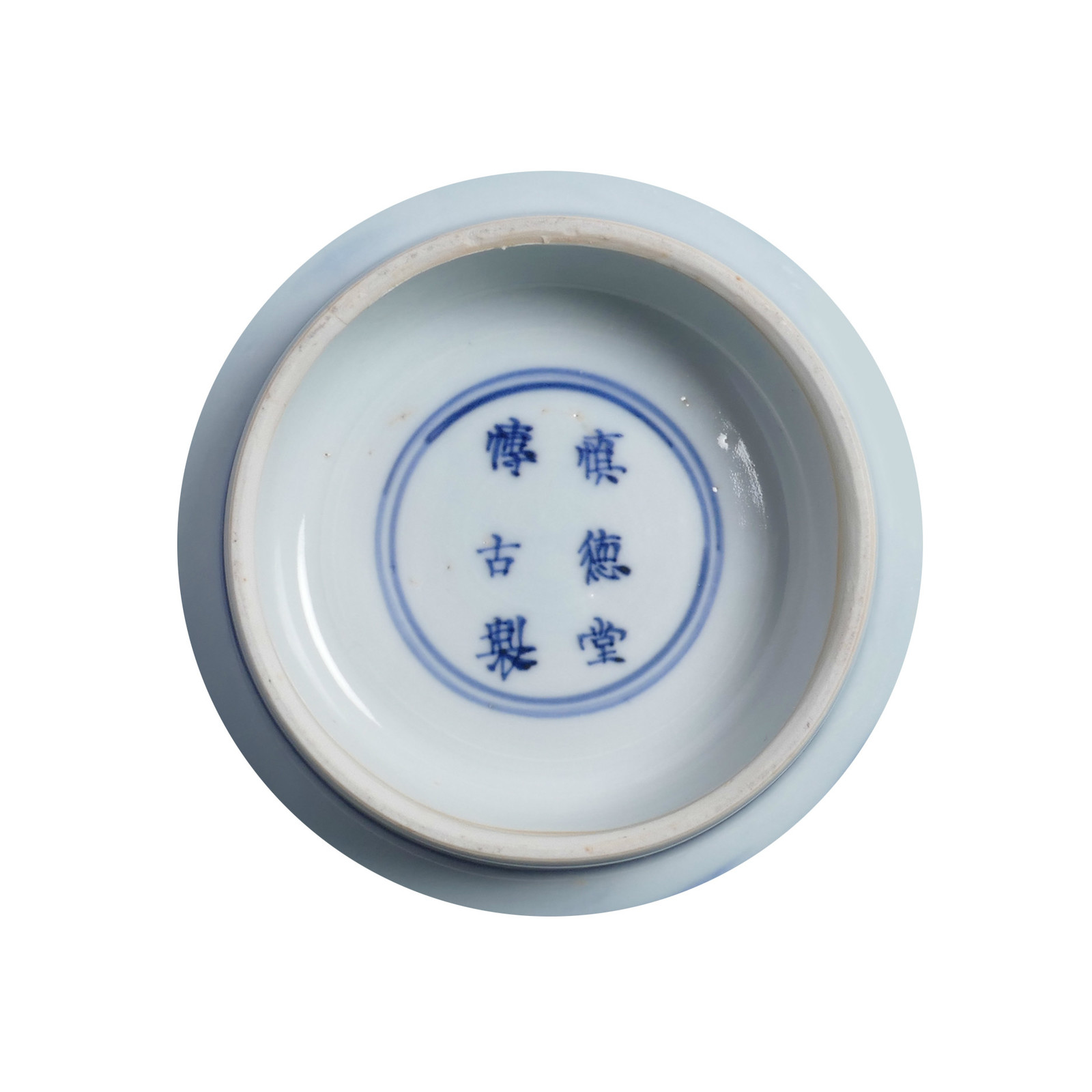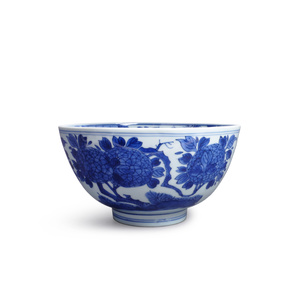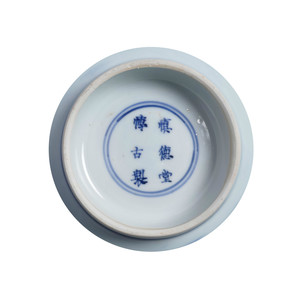Kangxi, circa 1662-1680
The bowl stands on a high straight foot, the rounded sides spreading towards the rim. The outside is painted in underglaze blue with a large blossoming prunus tree, a fruiting pomegranate tree and lychee tree, all between two double-line borders. The foot is painted with a further double-line border. The interior is painted with a central panel enclosing a peony spray, rocks and a leafless tree, below flowering branches bordering the rim. The recessed base is inscribed with a six-character mark shen de tang bo gu zhi.
19.7 cm diameter
The present bowl is sturdily potted and painted with a strong blue under a very fine glaze. The mark shen de tang bo gu zhi translates to ‘Made in the antique style for the Hall for the Cultivation of Virtue’ (2). This hall mark appears on porcelains from the early Kangxi period and on imperial porcelains from the Daoguang period. The Hall for the Cultivation of Virtue was one of the private imperial residences of the old Summer Palace, the Yuanmingyuan, located northwest of the Forbidden City in Beijing. The hall was originally built by the Kangxi emperor and was expanded by the Yongzheng and Qianlong emperors. Eventually the Daoguang emperor, who ruled from 1821-1850, used the hall as a daily residence until his death. The entire complex, including the Shendetang, was destroyed by European troops in 1860 (3).
The combination of lychee, pomegranate and prunus is rather unusual. Lychee, lizhi, is a pun for clever and symbolizes the birth of a son; pomegranate, shiliu, is a symbol of fertility and prunus, mei, represents perseverance, purity and old age (4). Lychees are rarely depicted on porcelain but appear frequently among lacquer wares from the Ming dynasty (1368-1644) (5). Very few bowls of this type and with this mark appear to be recorded. There is a bowl of similar shape with the same mark, painted in underglaze blue with a floral pattern against a coral-red ground, formerly in the collection of Evelyn Annenberg Hall and sold at auction in New York (6). Another bowl of this shape and decorated in a very similar style, bearing a Kangxi mark on the base, is illustrated by Chen Runmin (7).
Provenance: Formerly in a Dutch private collection
- Davison, 'The New and Revised Handbook of Marks on Chinese Ceramics', 2010, fig. 2401
- Davison, 2010, p. 263
- Batholomew, 'Hidden Meanings in Chinese Art', 2006, figs. 3.19, 3.23 and 7.48
- Sotheby’s, 30 March 2006, lot 89
- Christie’s, 29 March 2006, lot 100
- Chen Runmin, ' Shunzhi and Kangxi Blue and White: Qing Dynsty Porcelain in The National Palace Museum', Beijing, 2005, pl. 125
BF 48 清康熙 青花花果紋碗 《慎德堂博古製》楷書款
時代:清 康熙,約1662至1680年。
特徵:外側描繪花樹、結果的石榴樹與荔枝樹。內部則繪有牡丹花與岩石。底部書「慎德堂博古製」。
尺寸:直徑19.7公分。
來源:原荷蘭私人收藏。




